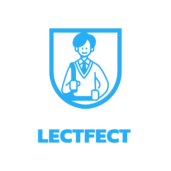Exploring the realm of peer-assisted learning strategies unveils a plethora of benefits for both the learners and the facilitators. Through my experience and research, I’ve come to appreciate the effectiveness of these strategies in fostering a supportive and interactive learning environment. Join me as we navigate through the intricacies of peer-assisted learning and discover its transformative impact on educational experiences.
Peer Assisted Learning Strategies
Peer strategies refer to collaborative techniques where students work together to enhance their learning experience. This approach involves peers supporting each other in understanding concepts, completing tasks, and solving problems. It fosters an environment of shared knowledge and mutual assistance, promoting active learning and engagement among students.
Historical Context and Development
 The concept of peer assisted strategies dates back to early education practices where students were encouraged to learn from each other in a group setting. Over time, educators recognized the value of peer interaction in academic advancement and formalized structured approaches to peer learning. This led to the development of various strategies such as peer tutoring, peer mentoring, and peer coaching, which have shown significant benefits in improving academic performance and social skills among students.
The concept of peer assisted strategies dates back to early education practices where students were encouraged to learn from each other in a group setting. Over time, educators recognized the value of peer interaction in academic advancement and formalized structured approaches to peer learning. This led to the development of various strategies such as peer tutoring, peer mentoring, and peer coaching, which have shown significant benefits in improving academic performance and social skills among students.
Benefits of Peer Academic Benefits for Students
Engaging in peer-assisted learning strategies has demonstrated tangible academic advantages for students. Working collaboratively with peers allows for a diverse exchange of ideas, enhancing critical thinking skills and problem-solving abilities. In this dynamic learning environment, students often experience increased motivation and engagement, leading to improved retention of information. Additionally, peer-assisted learning fosters a deeper understanding of the subject matter as individuals explain concepts to one another, reinforcing their own learning in the process.
Social and Emotional Advantages
 Apart from the academic benefits, peer-assisted learning strategies offer significant social and emotional advantages to students. By working together towards common educational goals, students develop stronger communication and teamwork skills. This collaborative approach also promotes a sense of belonging and community within the learning environment, reducing feelings of isolation and fostering positive peer relationships. Furthermore, the mutual support and encouragement exchanged during peer-assisted activities nurture students’ self-confidence and self-esteem.
Apart from the academic benefits, peer-assisted learning strategies offer significant social and emotional advantages to students. By working together towards common educational goals, students develop stronger communication and teamwork skills. This collaborative approach also promotes a sense of belonging and community within the learning environment, reducing feelings of isolation and fostering positive peer relationships. Furthermore, the mutual support and encouragement exchanged during peer-assisted activities nurture students’ self-confidence and self-esteem.
Benefits for Tutors and Teaching Assistants
Peer-assisted learning strategies not only benefit students but also provide valuable advantages for tutors and teaching assistants involved in the process. Serving as peer tutors or teaching assistants allows individuals to reinforce their own understanding of the subject matter through teaching and guiding their peers. This role not only enhances their communication and leadership skills but also builds their confidence and teaching abilities. Moreover, tutors and teaching assistants often report personal satisfaction and fulfillment from helping their peers succeed, creating a symbiotic relationship that enriches the learning experience for all parties involved.
Key Components for Success
In implementing peer-assisted learning strategies, it’s crucial to establish clear guidelines and expectations. Structuring the program with well-defined learning objectives and assigned roles for both learners and facilitators is key. By creating a supportive environment that encourages active participation, knowledge sharing, and constructive feedback, the program can effectively enhance the learning experience for all participants.
Challenges and Solutions in Implementation
 One common challenge in implementing peer-assisted learning strategies is ensuring equal participation among all students. To address this, rotating leadership roles within groups can promote inclusivity and engagement. Additionally, providing training and support for peer facilitators can help maintain consistency in teaching quality and ensure that all participants benefit from the program. Regular communication among students and facilitators can also help identify and resolve any issues that may arise during the implementation process.
One common challenge in implementing peer-assisted learning strategies is ensuring equal participation among all students. To address this, rotating leadership roles within groups can promote inclusivity and engagement. Additionally, providing training and support for peer facilitators can help maintain consistency in teaching quality and ensure that all participants benefit from the program. Regular communication among students and facilitators can also help identify and resolve any issues that may arise during the implementation process.
Case Studies and Research Outcomes
Having explored the benefits and implementation strategies of peer-assisted learning in education, it’s evident that this approach offers a myriad of advantages for both students and tutors. Collaboration fosters critical thinking, problem-solving skills, and motivation, enhancing the overall learning experience. By setting clear guidelines, defining objectives, and assigning roles, educators can create a conducive environment for effective peer learning. Overcoming challenges such as ensuring equal participation and providing facilitator training are key to successful implementation. Regular communication plays a vital role in addressing issues and optimizing the peer-assisted learning process.

